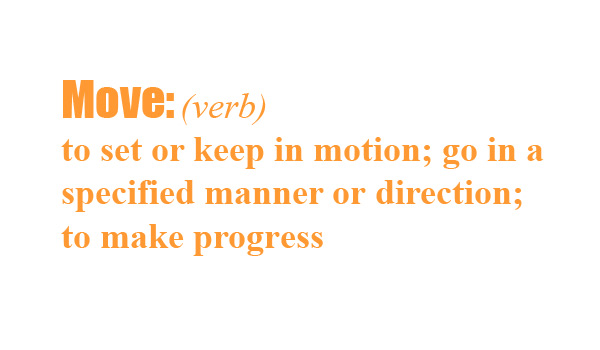Finding the right pillow to avoid neck pain
It is one thing lying in bed for 6-8 hours each night but another thing having a restful sleep.
We spend up to a third of our life sleeping. That is over 2500 hours or 120 days a year sleeping in bed so it is important that we may as well lie comfortably in bed that long!
We spend thousands of dollars in search for a suitable mattress to support our backs, however we often neglect the thought of spending wisely on a suitable pillow to support our necks.
We spend up to a third of our life sleeping. That is over 2500 hours or 120 days a year sleeping in bed so it is important that we may as well lie comfortably in bed that long!
We spend thousands of dollars in search for a suitable mattress to support our backs, however we often neglect the thought of spending wisely on a suitable pillow to support our necks.
18/07/2013
We spend up to a third of our life sleeping. That is over 2500 hours or 120 days a year sleeping in bed so it is important that we may as well lie comfortably in bed that long!
We spend thousands of dollars in search for a suitable mattress to support our backs, however we often neglect the thought of spending wisely on a suitable pillow to support our necks.
Common quotes I get from patients:
“I go to sleep fine but I wake up in the middle of the night/next morning sore in the neck with/without a headache”.
If this is you then it may be time get a new ‘correct’ pillow.
“My pillow is over 10 years old”.
Even the best pillows probably have a replacement date of 6-8 years.
The “right” pillow
Making the correct decision on purchasing the right pillow can be challenging.
 Too high or too low?
Too high or too low?
Pillows can be too high or too low depending on the individual. A person’s neck should be supported in this ‘neutral’ position with an appropriate pillow when lying either on your back or your side. Get a family member to look at your normal neck posture from the side firstly in standing and when lying to check this.
The position your head naturally sits on your shoulders when standing is how it should remain when lying.
A pillow too high can force people lying on their back to keep their neck nodded forwards putting stretch on their joints and neck muscles. When lying on your side using a pillow too high can cause an unnatural tilt of your neck, putting strain on your neck joints. Conversely using a pillow too low when lying on your back or side can put unnecessary compression on your neck joints.
Often patients suffering with neck pain in the night tell me they toss their pillow off the bed and trial sleeping without a pillow! Needless to say this lack of any neck support doesn’t help them.
What type of pillow should I buy?
Traditionally pillows have been made from cotton, Dacron/polyester/
synthetic fibres, foam, wool, feather, and feather and down. More
recently, manufacturers have used anything from buckwheat, microbeads,
memory foam and latex, to moulded memory foam/latex pillows. No wonder we get confused when we walk into the bedware department!
The general principle applies “you get what you pay for” when it comes to pillows.
Each pillow type has its pros and cons. If you purchase a cheap $15-20 cotton or polyester pillow – expect it to last no more than 6-12 months max. After this time these pillows starts to fail to ‘rebound back into shape’. Foam pillows are often cheap but can sometimes have too much recoil/spring back that fails to provide adequate neck support.
A good test is to place a can of baked beans on the polyester pillow. If the pillow fails to rebound back into shape it is probably time to purchase a new pillow.
 ‘Feather only’ pillows can provide adequate support but can lack the necessary comfort when lying on prickly feathers found in cheaper varieties. A nice compromise is purchasing a feather/down pillow. These pillows tend to be one of the ‘softest’ pillows on the market. The feathers provide the support while the down provides the comfort. If this suits you, just remember not all feather/down pillows are equal. It may be a wiser idea to spend some more money and make sure you purchase a feather/down pillow that has at least 50% down to provide the comfort. These pillows do not rebound back into shape so make sure you ‘plump up’ the pillow each night before lying down (Personally, I prefer a goose feather 20% and down 80% pillow and get a good nights sleep!).
‘Feather only’ pillows can provide adequate support but can lack the necessary comfort when lying on prickly feathers found in cheaper varieties. A nice compromise is purchasing a feather/down pillow. These pillows tend to be one of the ‘softest’ pillows on the market. The feathers provide the support while the down provides the comfort. If this suits you, just remember not all feather/down pillows are equal. It may be a wiser idea to spend some more money and make sure you purchase a feather/down pillow that has at least 50% down to provide the comfort. These pillows do not rebound back into shape so make sure you ‘plump up’ the pillow each night before lying down (Personally, I prefer a goose feather 20% and down 80% pillow and get a good nights sleep!).
Memory foam pillows and latex pillows are becoming more popular with some of these pillows even coming pre-moulded to contour to the natural alignment of your neck. They also tend to last a long time. Keep in mind these pillows tend to be firmer and have fixed heights. If you are a person who moves a lot in their sleep from their back onto their side, the contour may not be supporting your neck in the position where you need it all night long. Try to keep these pillows low down on the neck for adequate support.
Some of my patients with osteoarthritic necks love moulded memory foam and moulded latex pillows.
Comfort
A big factor in purchasing a pillow should come down to comfort. The definition of ‘comfort’ widely differs between people - some people swear by firm pillows and others quite simply prefer soft pillows. For this reason quite simply there is no ‘perfect pillow’ for every person.
If you are finding even the best pillow is not helping you get a good night’s sleep, you may have a problem in your neck. A visit to a well qualified physiotherapist is recommended (no GP referral is necessary) who can consult you on your neck and discuss whether your current pillow is adequate.
We spend thousands of dollars in search for a suitable mattress to support our backs, however we often neglect the thought of spending wisely on a suitable pillow to support our necks.
Common quotes I get from patients:
“I go to sleep fine but I wake up in the middle of the night/next morning sore in the neck with/without a headache”.
If this is you then it may be time get a new ‘correct’ pillow.
“My pillow is over 10 years old”.
Even the best pillows probably have a replacement date of 6-8 years.
The “right” pillow
Making the correct decision on purchasing the right pillow can be challenging.
- People vary widely in their body shapes and girths
- Some people may have curvature of the spine or hunched middle backs with protruding necks.
- We also all sleep in different positions throughout the night - we may change position up to 15 times in a night. Some people prefer to start sleeping on their backs, others on their side. I pity those people who prefer to sleep on their front (and wonder why their neck is sore in the morning!)

Pillows can be too high or too low depending on the individual. A person’s neck should be supported in this ‘neutral’ position with an appropriate pillow when lying either on your back or your side. Get a family member to look at your normal neck posture from the side firstly in standing and when lying to check this.
The position your head naturally sits on your shoulders when standing is how it should remain when lying.
A pillow too high can force people lying on their back to keep their neck nodded forwards putting stretch on their joints and neck muscles. When lying on your side using a pillow too high can cause an unnatural tilt of your neck, putting strain on your neck joints. Conversely using a pillow too low when lying on your back or side can put unnecessary compression on your neck joints.
Often patients suffering with neck pain in the night tell me they toss their pillow off the bed and trial sleeping without a pillow! Needless to say this lack of any neck support doesn’t help them.
What type of pillow should I buy?
Traditionally pillows have been made from cotton, Dacron/polyester/
synthetic fibres, foam, wool, feather, and feather and down. More
recently, manufacturers have used anything from buckwheat, microbeads,
memory foam and latex, to moulded memory foam/latex pillows. No wonder we get confused when we walk into the bedware department!
The general principle applies “you get what you pay for” when it comes to pillows.
Each pillow type has its pros and cons. If you purchase a cheap $15-20 cotton or polyester pillow – expect it to last no more than 6-12 months max. After this time these pillows starts to fail to ‘rebound back into shape’. Foam pillows are often cheap but can sometimes have too much recoil/spring back that fails to provide adequate neck support.
A good test is to place a can of baked beans on the polyester pillow. If the pillow fails to rebound back into shape it is probably time to purchase a new pillow.

Memory foam pillows and latex pillows are becoming more popular with some of these pillows even coming pre-moulded to contour to the natural alignment of your neck. They also tend to last a long time. Keep in mind these pillows tend to be firmer and have fixed heights. If you are a person who moves a lot in their sleep from their back onto their side, the contour may not be supporting your neck in the position where you need it all night long. Try to keep these pillows low down on the neck for adequate support.
Some of my patients with osteoarthritic necks love moulded memory foam and moulded latex pillows.
Comfort
A big factor in purchasing a pillow should come down to comfort. The definition of ‘comfort’ widely differs between people - some people swear by firm pillows and others quite simply prefer soft pillows. For this reason quite simply there is no ‘perfect pillow’ for every person.
If you are finding even the best pillow is not helping you get a good night’s sleep, you may have a problem in your neck. A visit to a well qualified physiotherapist is recommended (no GP referral is necessary) who can consult you on your neck and discuss whether your current pillow is adequate.

